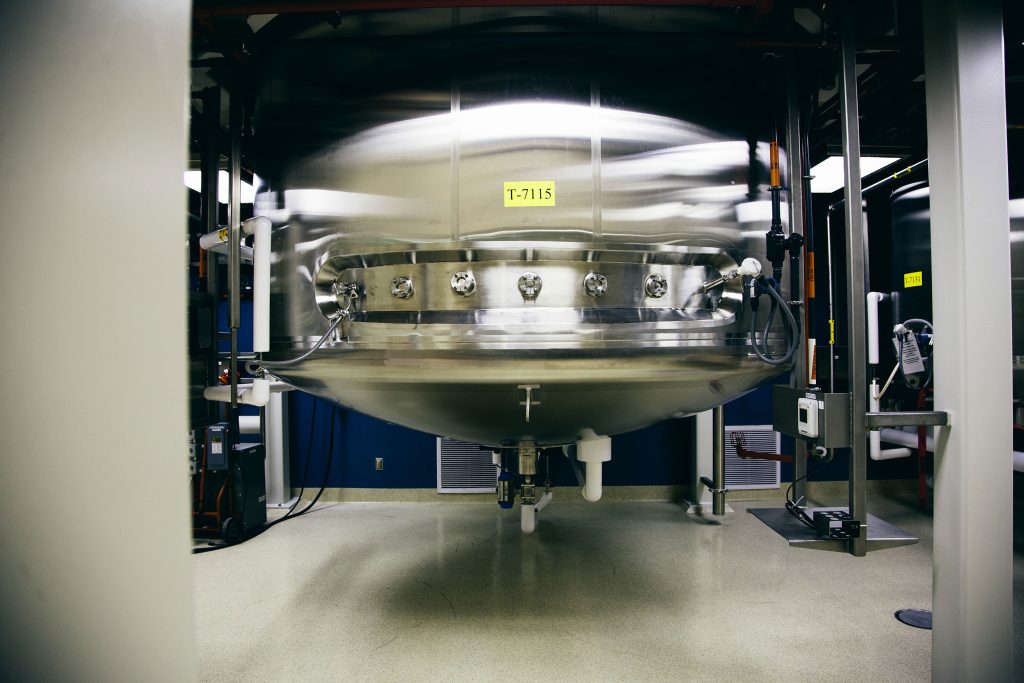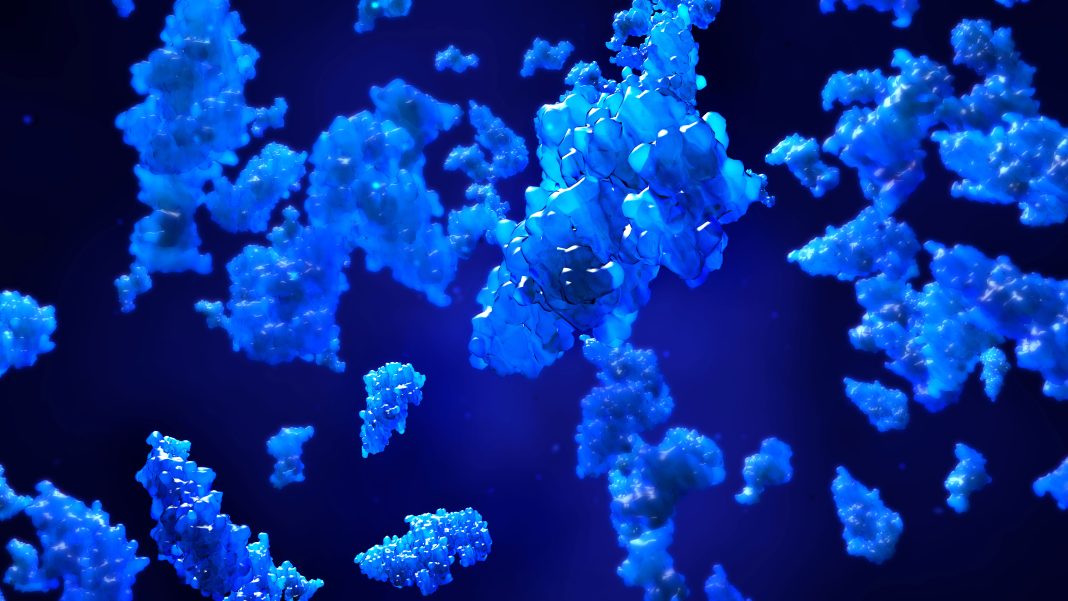Host cells that are modified to express therapeutic proteins are the foundation of the biopharmaceutical industry. However, these cells also express proteins other than the ones they’re supposed to express. These “other” proteins are called, appropriately enough, host cell proteins, or HCPs. They represent one of the biggest challenges in biomanufacturing.
“HCPs are process-related impurities that could degrade either product molecules or excipients used in a formulation, potentially compromising the product’s stability,” explains Nisha Palackal, PhD, director of protein biochemistry, Regeneron Pharmaceuticals. “HCPs also have the potential to be immunogenic in humans.”
Palackal points out that in process development, the need to remove HCPs is easy to recognize. What’s hard is deciding how, exactly, HCPs should be removed. “It is the goal of every drug manufacturer to remove as many HCPs as possible,” she elaborates. “But some HCPs are very difficult to remove. They can ‘hitchhike’ with the drug of interest and come through to the final product.”
“If the identity of the HCP in the final formulated material is known, downstream processes can be improved to specifically remove this impurity,” Palackal remarks. “Alternatively, methods can be developed to monitor this impurity.”
Familiar but still troublesome HCPs
Known HCPs include lipases—enzymes that cells use to break down fats and lipids. “Recently, a lot of attention has been directed toward a class of HCPs called lipases,” Palackal notes. “They can degrade polysorbates in the formulation, thus affecting the stability of the therapeutic protein. Proteases like cathepsins, metalloproteinases, and serine proteases have been shown to degrade therapeutic monoclonal antibodies.”
The potential for HCPs to reduce product stability is also highlighted by Feng Yang, PhD, senior scientist, Protein Analytical Chemistry, Genentech. She states that various HCP species can impact both active ingredients and excipients in biologic formulations.

“Several hydrolases, such as lipoprotein lipase and lysosomal phospholipase A2, are among the root causes for polysorbate degradation in biopharmaceutical protein formulations,” she details. “Such HCPs may compromise stability and reduce the shelf life of drug products.”
According to Yang, the problem of polysorbate degradation has attracted the interest of researchers. To support this contention, she cites a study focused on knocking out CHO HCPs that degrade polysorbate,1 as well as a study that identified an HCP called lysosomal phospholipase A2 isomer X1 (LPLA2) that degraded antibody formulations.2
Besides compromising quality and stability, “polysorbate degradation can lead to the formation of particles in formulations, creating safety concerns,” Feng says.
Of all the harms caused by HCPs, unwanted immune responses can be the most serious. They can even be lethal. Consequently, biomanufacturers keep a close eye on potentially dangerous HCPs. One such HCP is phospholipase B-like 2 protein. This HCP, Feng relates, was found in lebrikizumab clinical material and shown to trigger “specific and measurable immune responses in around 90% of subjects based on data from clinical studies.”
Established HCP detection techniques
The first stage of any HCP removal strategy is detection. In the biopharmaceutical industry, this usually means the development of an enzyme-linked immunosorbent assay (ELISA). ELISAs rely on antibodies to bind target proteins. ELISAs that provide quantitative measurements of total HCP levels may use a multitude of antibodies.
ELISAs are widely accepted as the gold standard for release testing for HCPs. “The ELISA method is very sensitive in terms of detecting HCPs,” says Roger Lio, PhD, a research scientist at Bristol Myers-Squibb. “Moreover, it is a method that can be readily automated through coupling it with robotic liquid handler. With all these advantages, ELISA is a method that has high throughput and that can deliver accurate global quantification of HCPs.
But ELISAs are not perfect, Lio admits, and industry efforts to improve them are focused on increasing the proportion of the HCPs that they can detect, which is known as the assay’s “coverage.”
“The shortcomings of ELISA-based approaches are mainly related to the coverage and HCP identifications,” Lio explains. “Related to coverage, ELISA is based upon antibodies against HCPs; thus, a sufficient ELISA HCP method requires the antibody to have high coverage of HCPs in the sample. This requires extensive development before the antibody is deployed to characterize real samples.”
The assays also struggle with complex samples. According to Lio, this limitation is an area of ongoing research. “As for identification,” he continues, “an ELISA itself cannot reveal the individual identities of HCPs when characterizing samples with a mixture of different HCPs. These limitations drive the further development of complementary HCP detection methods.”
This take is shared by Regeneron’s Palackal, who says the shortcomings of these assays remain a major catalyst for research. “A traditional ELISA to determine the level of total HCPs is required for every batch release,” she remarks. “Based on the levels of HCP detected, further identification using mass spectrometry techniques has become a common practice within drug makers.
“Identification of the HCP impurity enables the drug manufacturer to design specific steps in downstream processing to remove or develop methods to monitor this impurity. Significant progress has been made in detecting and identifying HCPs over the past decade.”
A new HCP detection technique
The dynamic range of ELISA assays—the lowest to the highest concentrations of a particular protein the assay can detect—is another area of research. Such work, says Genentech’s Feng Yang, is becoming more important as product titers rise.
“The challenge is mainly the broad dynamic range required to detect low-level hydrolytic enzyme peptides in the presence of excessively abundant peptides from biotherapeutic products,” she stresses. “For example, if hydrolytic enzymes are to be detected at a 0.1-ppm level, the dynamic range must exceed seven orders of magnitude.”
To address this need, Feng and colleagues developed an alternative HCP detection workflow, one that uses liquid chromatography–mass spectrometry and offers much greater sensitivity.
“With our approach,” she asserts, “we not only have achieved 0.1-ppm sensitivity for the challenging hydrolytic enzyme detection, but also have demonstrated the robustness of the method at this 0.1-ppm sensitivity, by consistently identifying HCPs at 0.1 ppm or above regardless of their sizes and sequences. This robustness is extremely important to increase the confidence of the HCP analysis.
“With this workflow for 0.1-ppm sensitivity to identify unknown HCPs, we also have shown the 0.01-ppm sensitivity in detecting and quantifying known/targeted hydrolytic enzymes to support our process development toward risk mitigation of polysorbate degradation and visual particle formation.”
Prioritizing the removal of problematic HCPs
Detection is only the first challenge that HCPs present to process developers. Once a population of HCPs is identified, researchers need to work out how to get rid of them, a task that is further complicated by the fact that different proteins need different removal processes.
One approach is to target the problematic HCPs—those known to provoke a harmful immune response, for example—and develop a removal process to deal with them as a priority. To discuss how this approach might work, a 26-company team participated in the BioPhorum Development Group HCP Workstream.
In 2021, the team’s deliberations culminated in the publication of a paper. It was titled, “‘High-risk’ host cell proteins (HCPs): A multi-company collaborative view,” and it detailed a classification system to determine if a particular HCP is considered “high risk.”3
One of the paper’s authors was Regeneron’s Palackal. “We set out recommendations for the industry in monitoring and controlling these high-risk proteins,” she recalls. “I highly encourage the HCP community to refer to this paper for further information.” The idea, she says, was to provide a step-by-step guide that could help process developers leverage risk assessments to establish a comprehensive control strategy for downstream HCP removal or neutralization.
References
1. Chiu J, Valente KN, Levy NE, et al. Knockout of a difficult-to-remove CHO host cell protein, lipoprotein lipase, for improved polysorbate stability in monoclonal antibody formulations. Biotechnol. Bioeng. 2017; 114(5): 1006–1015. DOI: 10.1002/bit.26237.
2 Hall T, Sandefur SL, Frye CC, et al. Polysorbates 20 and 80 Degradation by Group XV Lysosomal Phospholipase A2 Isomer X1 in Monoclonal Antibody Formulations. J. Pharm. Sci. 2016; 105(5): 1633–1642. DOI: 10.1016/j.xphs.2016.02.022.
3. Jones M, Palackal N, Wang F, et al. “High-risk” host cell proteins (HCPs): A multi-company collaborative view. Biotechnol. Bioeng. 2021; 118(8): 2870–2885. DOI: 10.1002/bit.27808.

